|
2014 Airshows
Titusville (Tico), FL
Spirit of St. Louis, MO
Youngstown Air Reserve
Station, OH
Central
Indiana Warbird Event Trilogy
Evansville Normandy Re-Enactment, IN
Dayton Airshow, OH
Warsaw, IN
Richmond, IN
WWI Dawn Patrol Rendezvous, Dayton, OH
Evansville ShrinersFest
2014 Warbird
Photo Review
Warbirds at the Commemoration of the
Normandy Invasion along the Evansville, IN Waterfront - June 14, 2014
Special Added Feature: How
Evansville, IN contributed to the Normandy Invasion and the winning of
World War Two.
Going to the Evansville
ShrinersFest 2014 created several "firsts" for me. The first one
was doing a riverfront aerial event, although not necessarily an airshow
in this case as I did not stay for the airshow itself. Also this
is the first time I have been to the Evansville event.
I have never really had an interest in
visiting the annual Evansville ShrinersFest and its airshow, basically
because the airshow portion does not feature warbirds. Also, being
a waterfront show on the Ohio River does not allow one to enjoy the
sounds of warbirds starting on the hot ramp, taxiing in front of the
crowd and the take-offs and landings that are such an integral part of
an airshow.
However, this year I did decide to the event
that starts on a Wednesday and runs through the weekend with a multitude
of events going on along the city's downtown waterfront. But even
then, it was not the two hour long late afternoon airshow that attracted
me to Evansville, but the thirty minute commemoration of the Normandy
Invasion with a re-enactment along the waterfront that included Normandy
veteran LST-325 and two Evansville built P-47s. Once the
re-enactment was complete, I did not stay for the airshow as I had seen
what I came for.
Evansville is located in the southwest corner
of Indiana along the Ohio River. Kentucky is across the Ohio River
from it and Illinois is a few miles to the west. Its remoteness
from central Indiana has made it difficult get to and to attract persons
to visit it. However, during World War Two this town on the Ohio
River made considerable contributions to providing war material that
helped win the war and the invasion of Normandy. Forty-eight
companies in the city had contracts to provide war material.
Included here is information on four of them and how they contributed to
the D-Day landings that were commemorated at the water front
re-enactment.
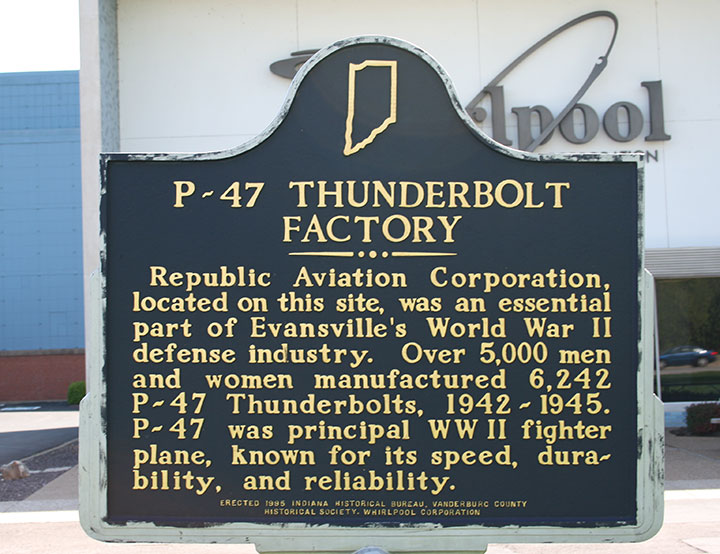
P-47s built in the Evansville, IN Republic
plant would have flown air support for the D-Day Normandy invasion.
40% of all P-47s were built in Evansville.
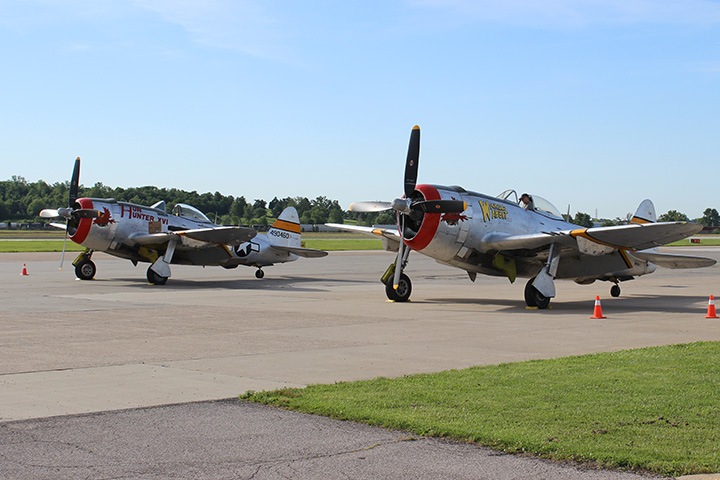
Early morning at the Evansville, IN airport and two P-47D Thunderbolts
that were built a half a mile to the south are setting on the ramp.
The first time these two P-47s flew after being built in the nearby
factory in WWII, it was from this airfield. This may very well
have been the first time these aircraft returned 'home". Later in
the day both aircraft would participate in the commemoration of the 70th
anniversary of D-Day with fly-overs along the riverfront in downtown
Evansville.
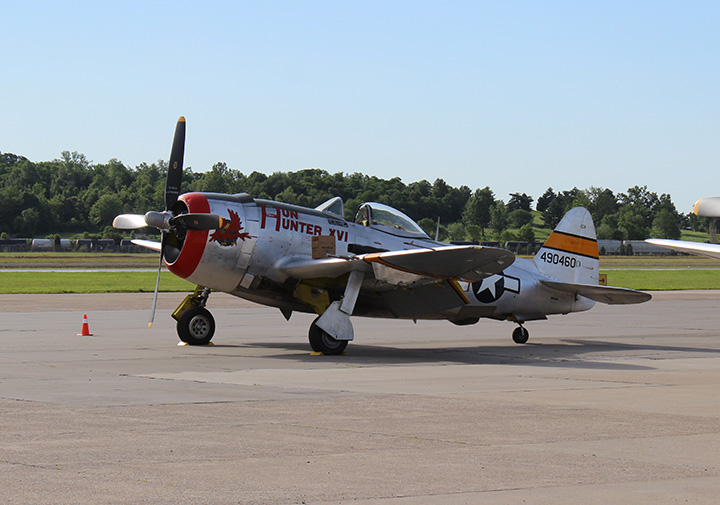
"Hun Hunter XVI" is owned by Neal Melton of Sevierville, TN and is part
of his Tennessee Museum of Aviation.
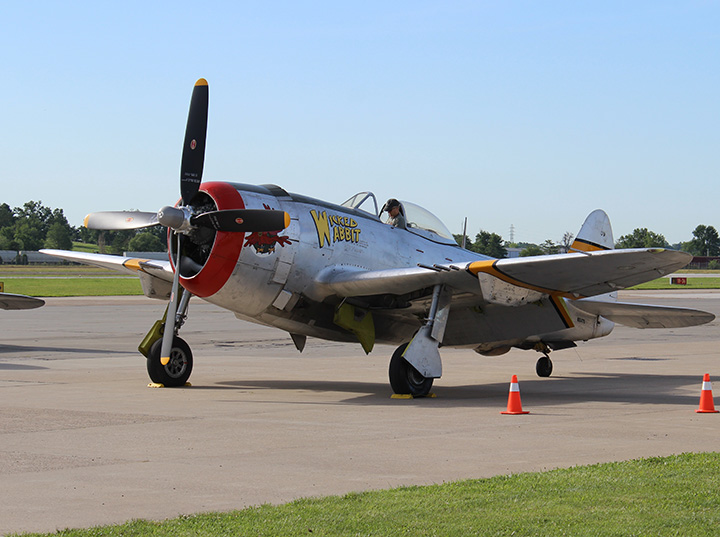
"Wicked Wabbit" is also owned by Neal Melton
and is also part of his Tennessee Museum of Aviation.
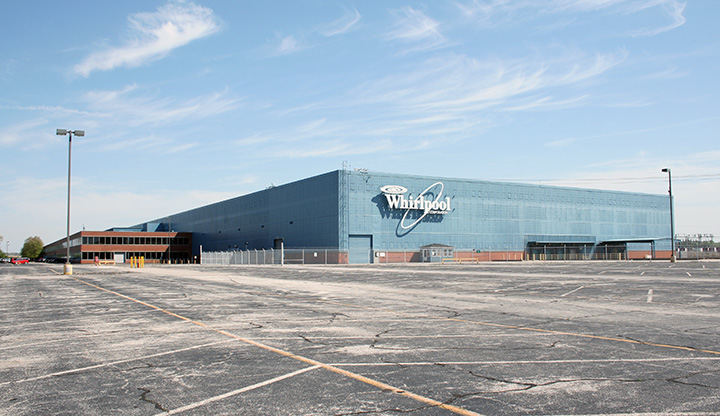
After World War Two the Evansville, IN P-47 plant, photographed above in
2011, was sold to International Harvester, which manufactured M1 Garand
rifles in this plant during the Korean War. Then Whirlpool
purchased the facility for appliance manufacturing and used it until
2010. The parking lot was empty in 2011 when I took this photo.
In 2014 the parking lot was filled with roofing shingles from the
company that now leases this space.
Another firm in town, Briggs Indiana, built
wings for the Vought F4U Corsair.
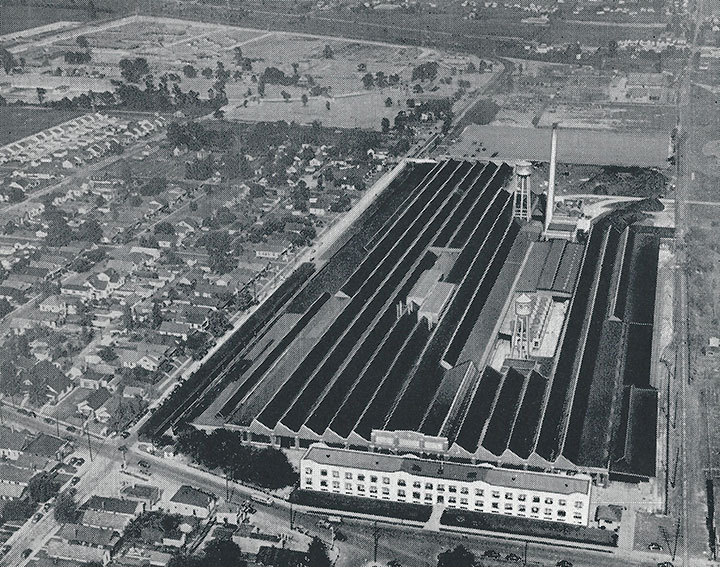
A mile or so to the south of the Evansville Airport and P-47 plant is this
former Chrysler plant, which in peacetime built Plymouth automobiles.
But during WWII this became part of Evansville's important contribution
to the war effort, in that 96% of the .45 caliber ammunition produced
during the war was done here. Any soldier landing at Normandy and
armed with a .45 pistol or a Thompson submachine gun would have
Evansville produced cartridges in his magazines. This photo from
WWII is looking east.
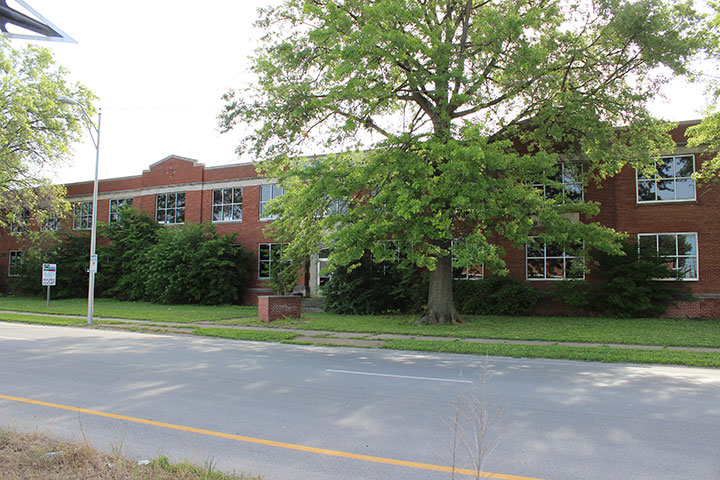
This is the front office section that was built just prior to WWII.
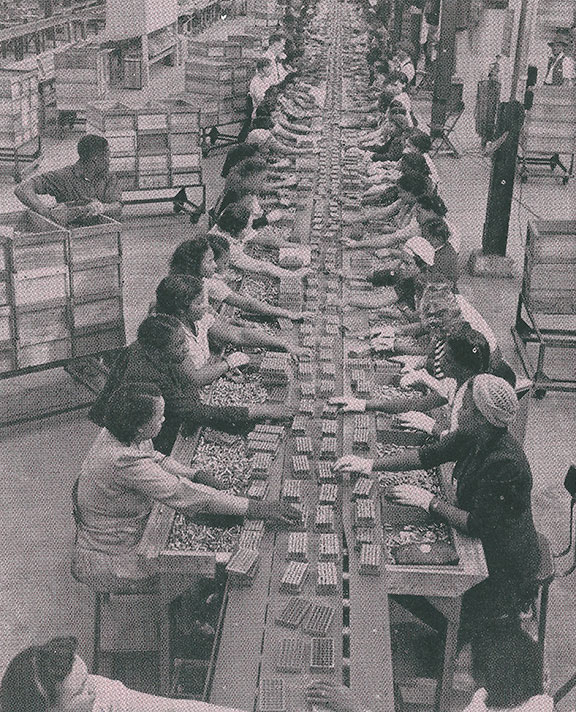
Here some of the 3.264 billion rounds of the
.45 ACP and .30 M1 carbine ammunition the plant produced up through
1944. Production was stopped as by then the plant had supplied
enough .45 ACP rounds to last through the end of WWII. Actually stocks
were still being used up in the early years of the Vietnam Conflict.
The plant in 1944-45 was contracted to rebuilt 1,500 M4 Sherman tanks
and 3,000 Dodge trucks.
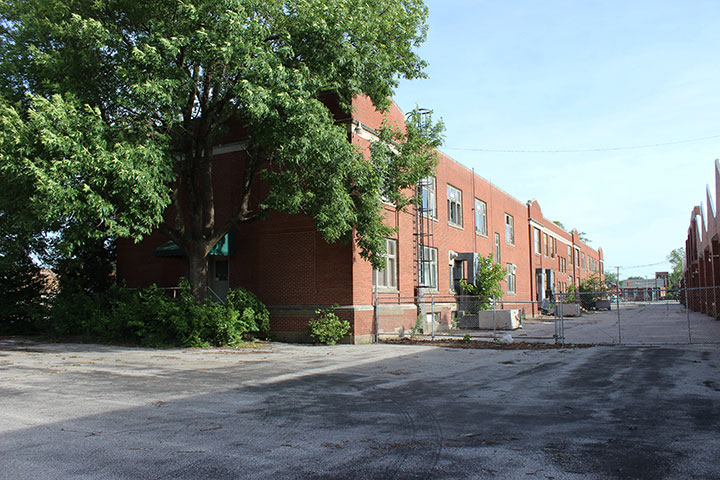
This photo shows the area looking north between the office building and
the factory.
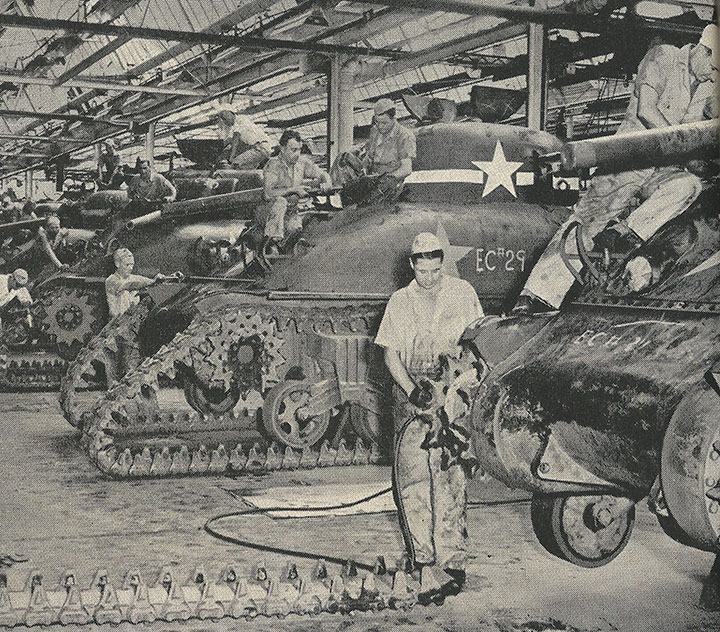
M4 Sherman tanks being rebuilt in the
Evansville plant.
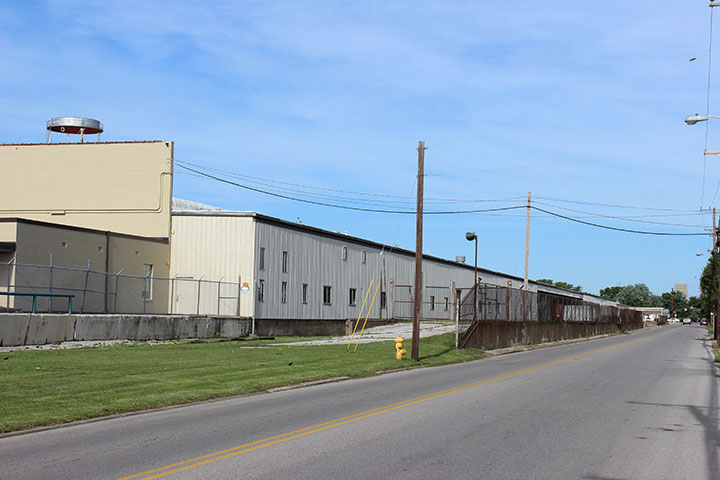
This photo is looking west along the north side of the plant.
Chrysler closed the plant in 1959 as it was too small for the efficient
manufacture of automobiles with a capacity of only 275 vehicles per day.
The plant was originally constructed before World War One by the Graham
Brothers to make trucks. The Dodge Brothers took over the plant
then they purchased Graham, and then Chrysler in turn took possession
when it purchased Dodge. One hundred years after it was built
portions of it are still being used by local businesses.
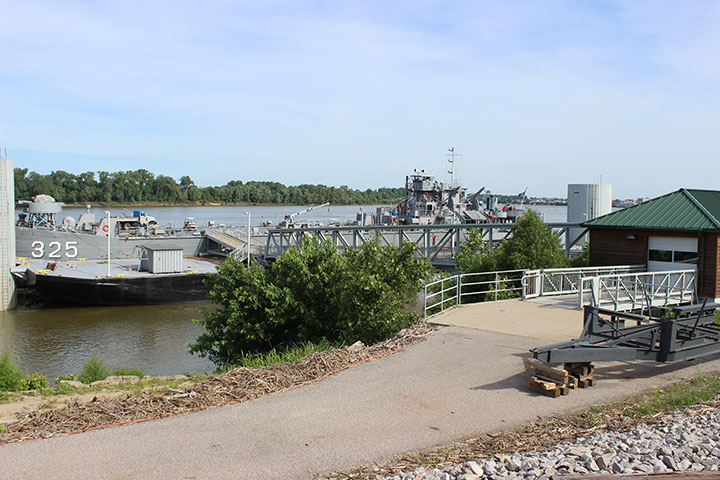
My next stop in Evansville was the home location of LST-325 along the
Ohio River. Having LST-325 (Built at the Philadelphia, PA.)
berthed here is significant for Evansville in that about a mile
downstream from this location is where the Evansville Shipyard built 167
LSTs of the total 1,051 constructed during the war, or 16% of the total.
The first LST built in Evansville, LST 157 had
its keel laid on June 25, 1942. The last LST from Evansville,
LST-1110, was commissioned on 2-28-1945 or 978 days later. This
was one LST being built every 5.8 days! It took 15,000 employees
working 24 hours a day, seven days a week, to accomplish this. Of
the 233 LSTs that participated at Normandy, twenty-five were from
Evansville.
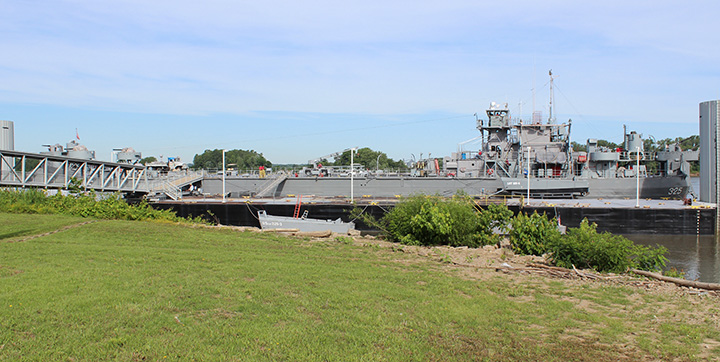
Due to the location of buildings and the pedestrian walkway to the ship,
there is no way to get an unobstructed photo of LST-325 at its dock.
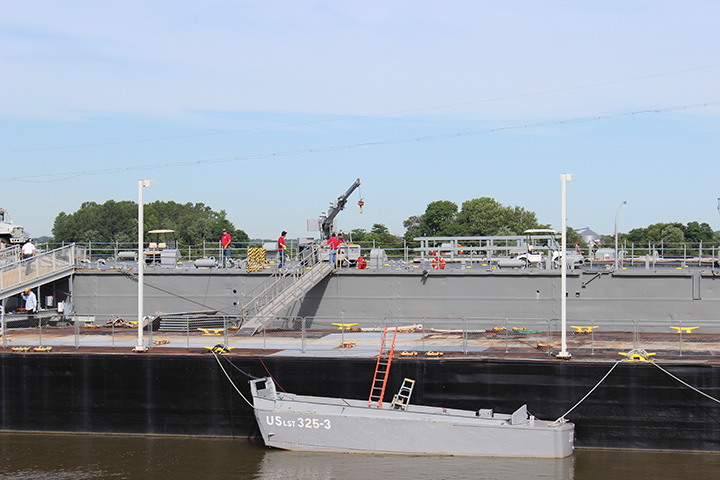
There was quite a bit of activity on the ship as the crew prepared for the
day's events. The crane in the center of the photo was operating
and getting ready to pick up the gangplank.
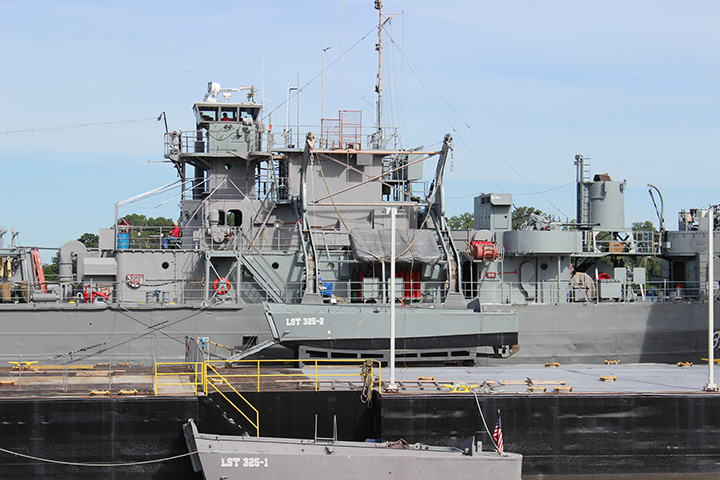
The captain can be seen in the pilot house making his preparations for
getting underway.
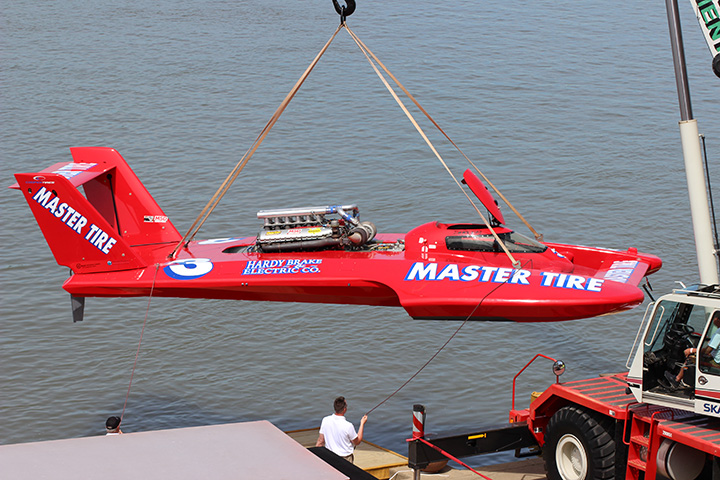
This was another first of me as I had never seen a hydroplane.
This one is the last one in existence with a piston powered engine,
which in this case is the Allison V-1710 aircraft engine. At one
time in the 1950s and 60s the Allison was the preferred engine and
dominated the sport. Now the hydroplanes use gas turbines.
Here the craft is being lowered into the Ohio River by a crane.

Needless to say I totally enjoyed the sound of the Allison engine as it
the boat makes a practice run. The announcer indicated it was
going at 180 mph when it came by. According to the persons I ended
up sitting with at the event, who were intense hydroplane fans, racing
used to be very big at Evansville. The two hydroplanes that were
at the event this year were the first ones since 2009. My new
friends told me that in the "old days" people would start lining up at 4
AM to get a prime viewing spot to watch the hydroplanes. Once the
gates would opened, everyone would run to get the best spot overlooking
the pit area, which is where I was located. When I asked what
caused the demise of the racing at Evansville, I was told spectators got
complacent and would not come out every year to support the event.
I could relate to this as it is what happened to the Indianapolis
Airshow. In theory the racing will be back in 2015 at Evansville.
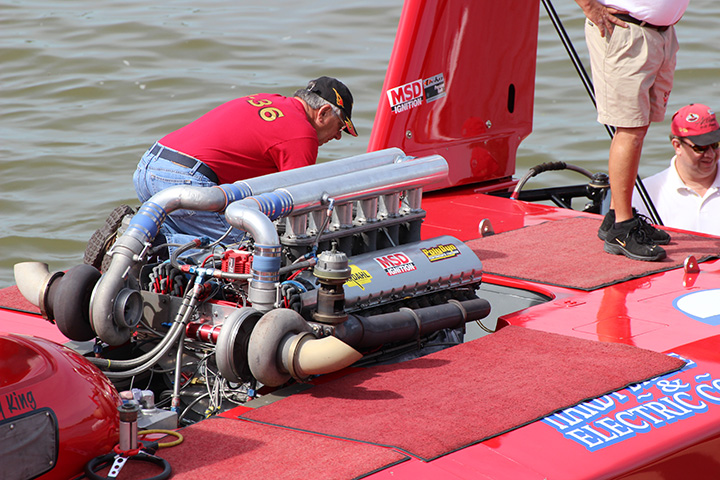
Here is a close up of the highly modified, twin turbo-charged Allison
V-1710 engine. According to the announcer it can produce 3,000 hp.
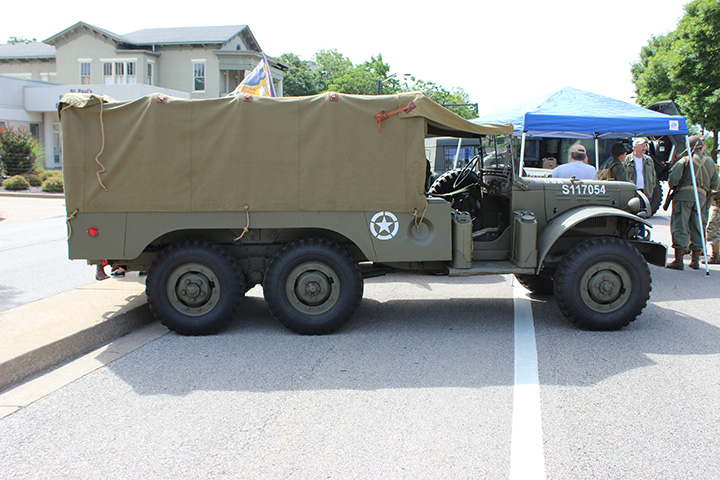
On display along the waterfront was this WWII Dodge WC 62 1.5 ton 6x6
truck. It would have been trucks like this that would have been
rebuilt in the Evansville Chrysler plant. This was an extended
version of the more familiar 3/4 ton WC51 Weapons carrier. The
WC51 was designed to carry an eight man infantry squad. When the
US Army converted to a 12 man infantry squad, the WC62 was produced to
be able to carry all 12 members of the unit.
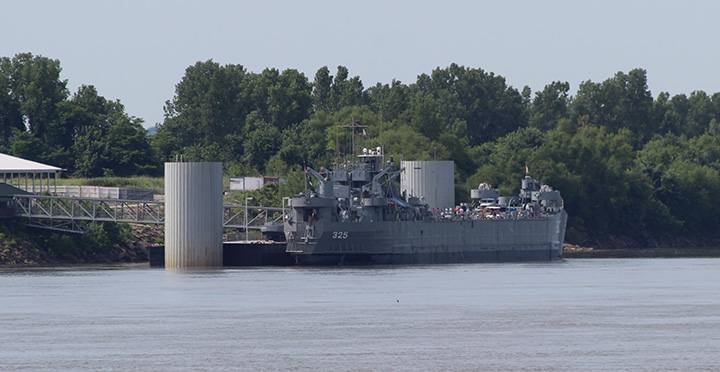
LST-325 as viewed from downtown Evansville and the Festival site.
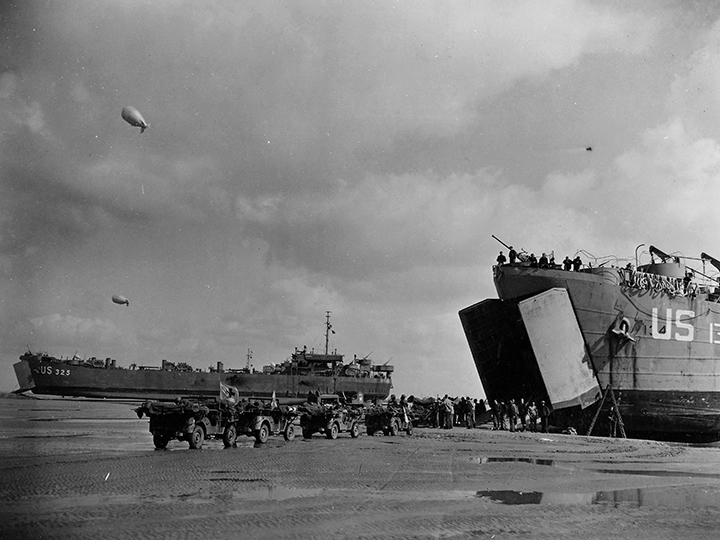
LST-134 and LST-325 at Normandy on June 12, 1944.
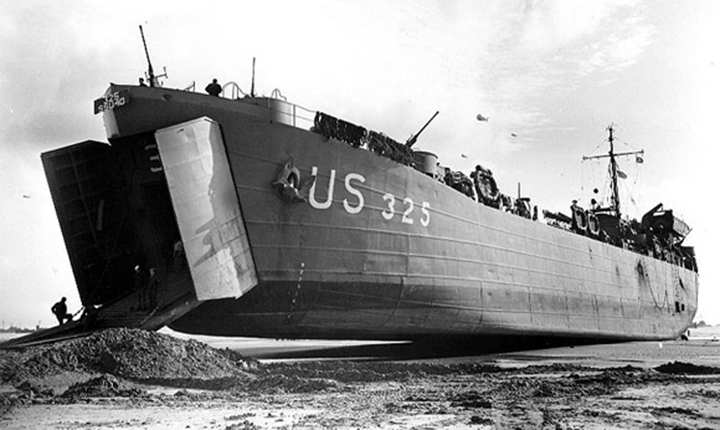
Waiting for high tide to depart back to England. This was the
second of 40 trips LST-325 made between the Normandy beaches and
England. Her first was on June 7, 1944 when she delivered 450
soldiers and 59 vehicles. On the return trip she took back 39
wounded.
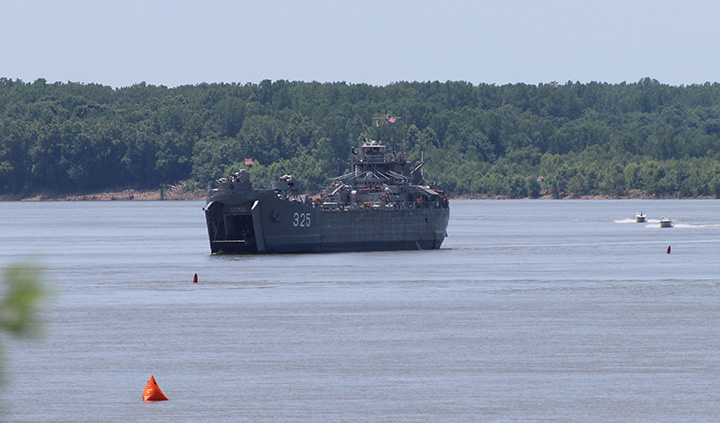
Show time!! LST-325 coming downstream.

The LCVP (Or replica, as there only a dozen of the original 20,000
left.) gets ready to land the infantry.
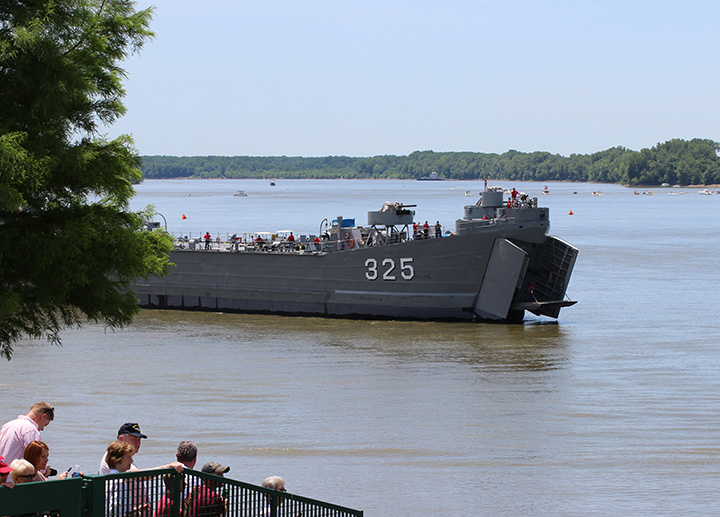
Another first for me was to see an LST operate under its own power.
LST-325 steamed a lot closer to shore than I thought she would. I
would have to switch lens to get all her in the frame.
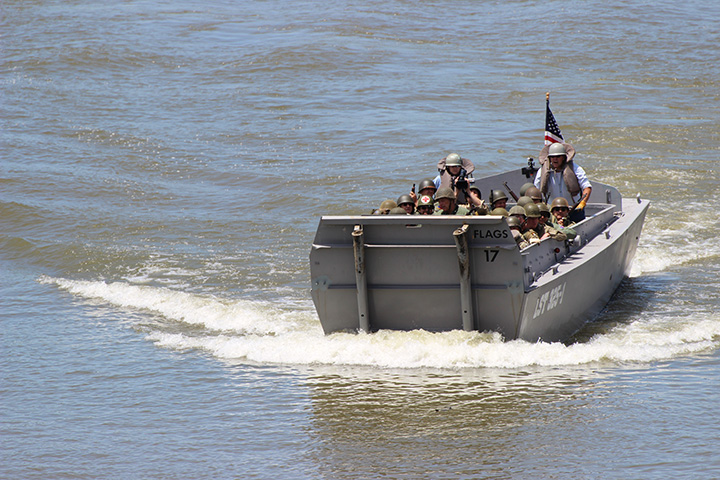
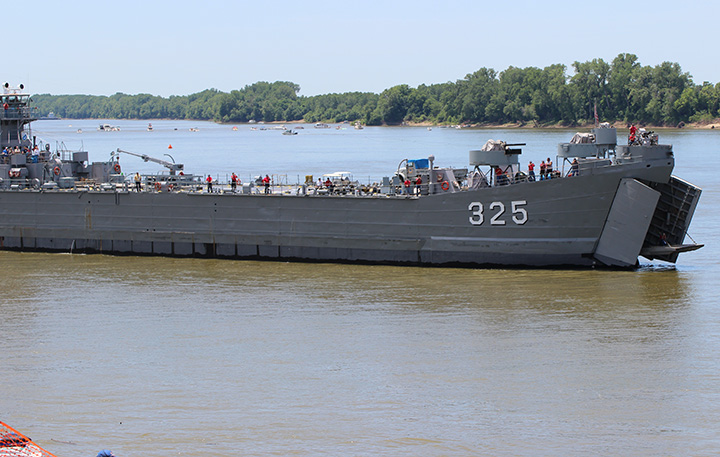
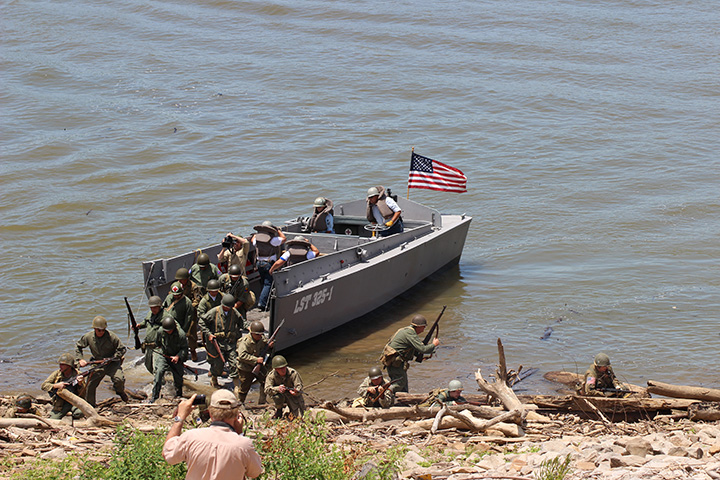
This was another first in that I had never
seen an LCVP (Or replica.) operate and drop the ramp.
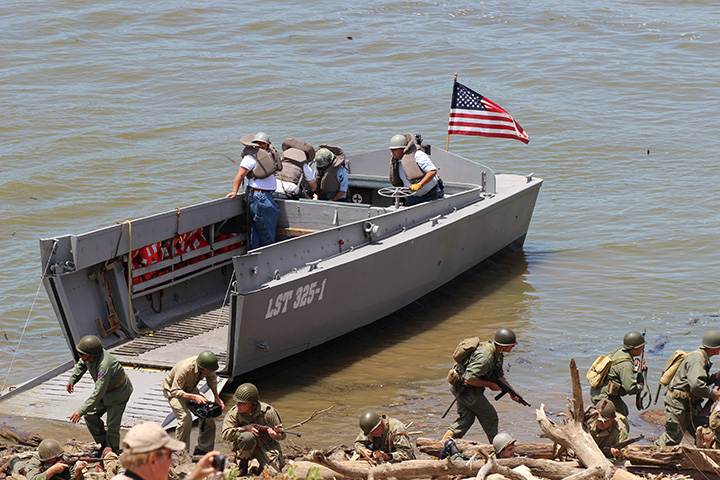
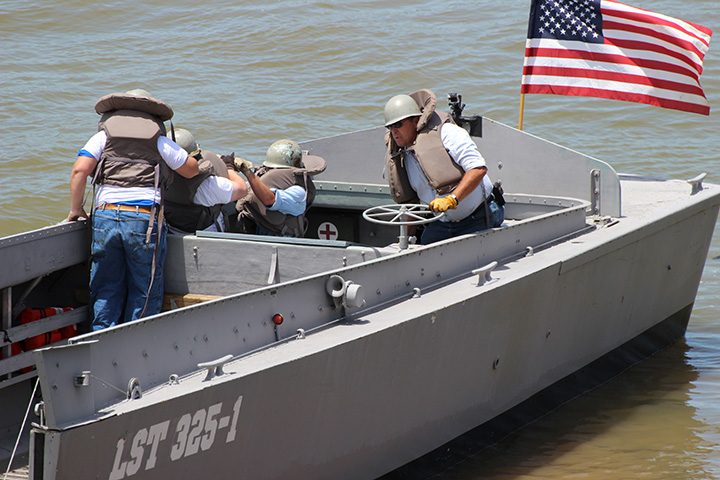
This was educational. LCVPs had four man US Coast Guard crews.
Here the coxswain is getting ready to back the boat off the beach.
At first I couldn't figure out what the two crewmen in the back were
doing. Then I realized they were working really hard to crank the
ramp back up.

This shot gives a better view of the crank
mechanism.

The ramp is coming back up. Note that one of the crewmen has lost
his helmet working the hand crank.
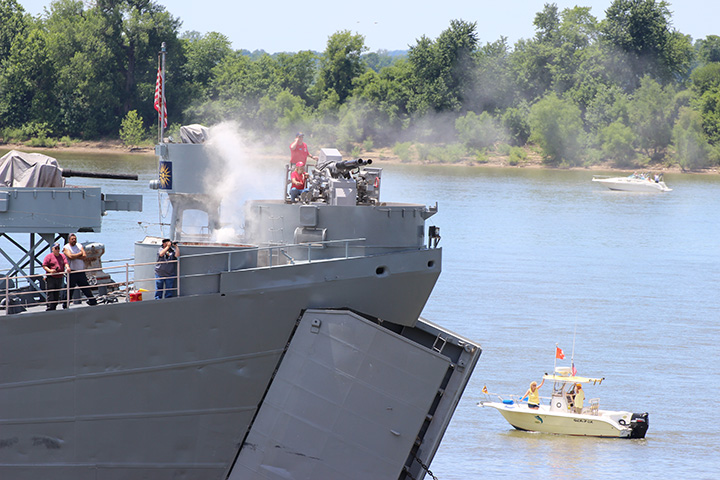
I think the crew at the front of the ship were having too much fun
firing the 40mm gun with blanks.
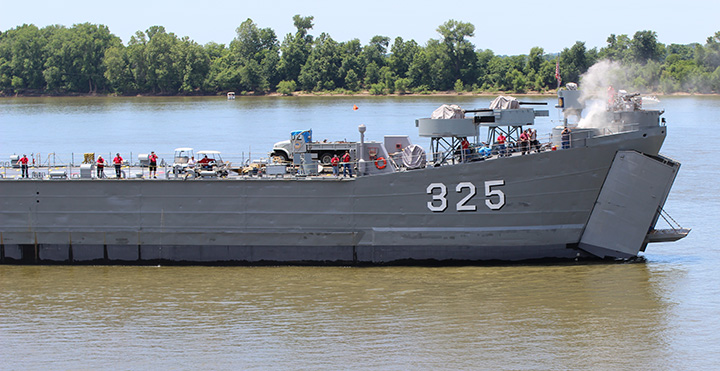
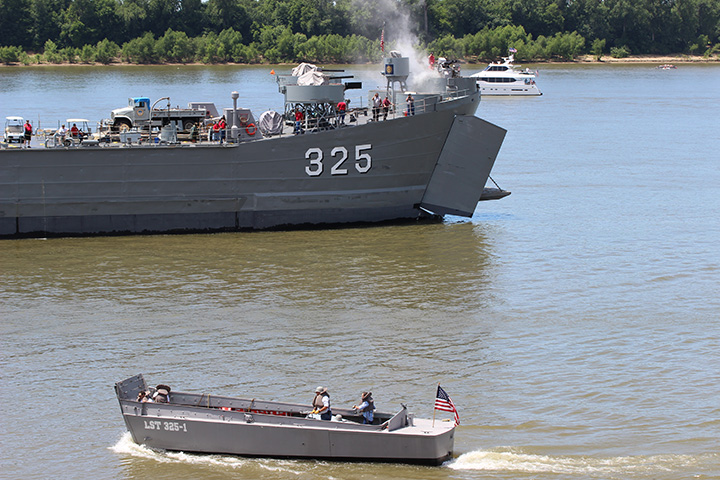
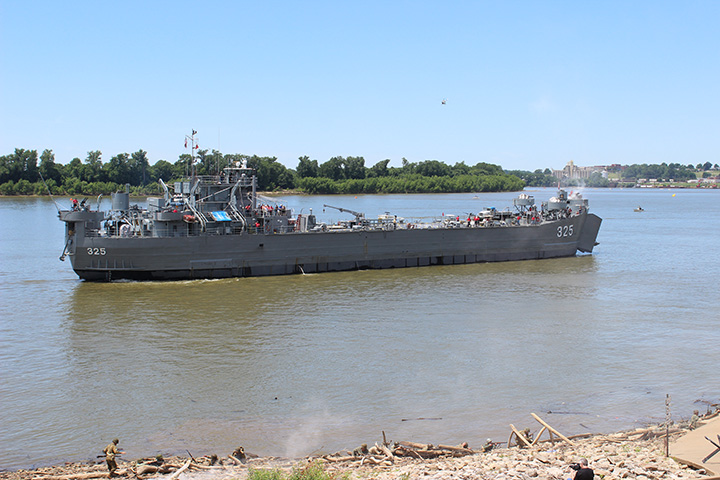
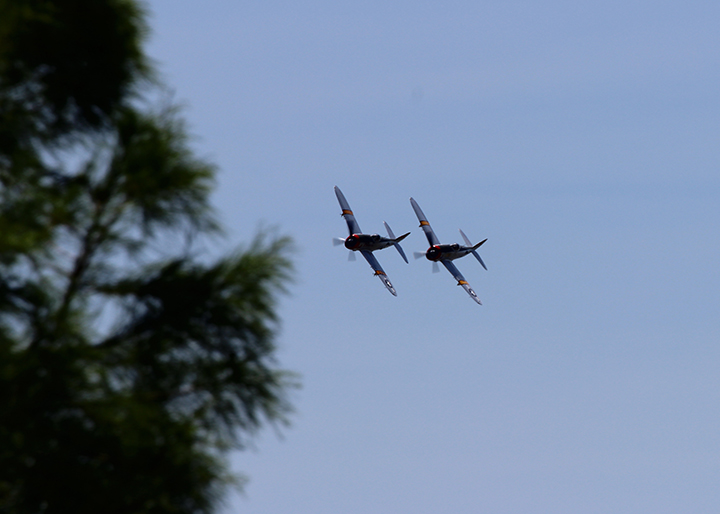
Here comes the air support.
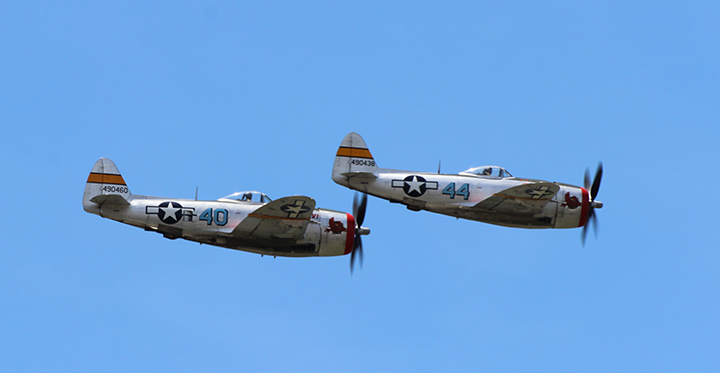
All of the P-47s built at Evansville were the D Model. 3,743 of
them were with the bubble canopy like these two.
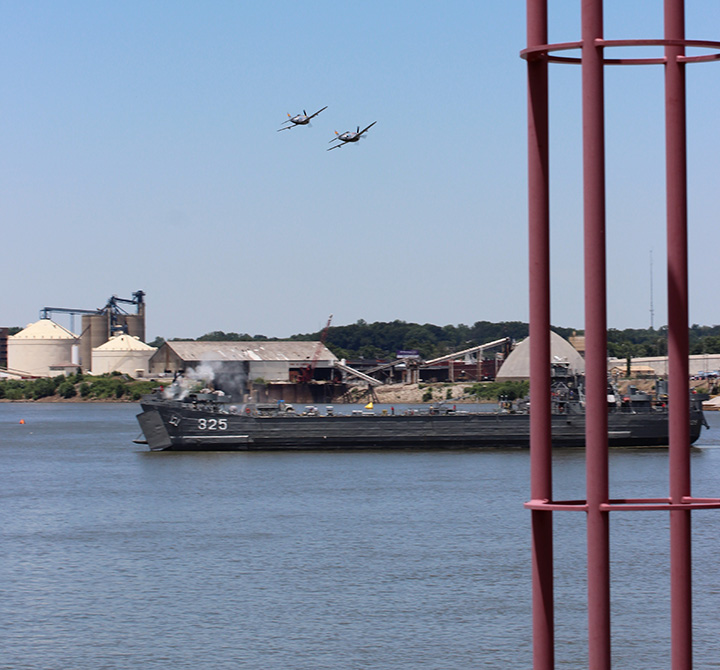
This was the photo I came to Evansville to take. The Evansville
built Thunderbolts flying over LST-325. As a bonus I got the
general location of the where the shipyard was during the war. It
burned to the ground in 1946.
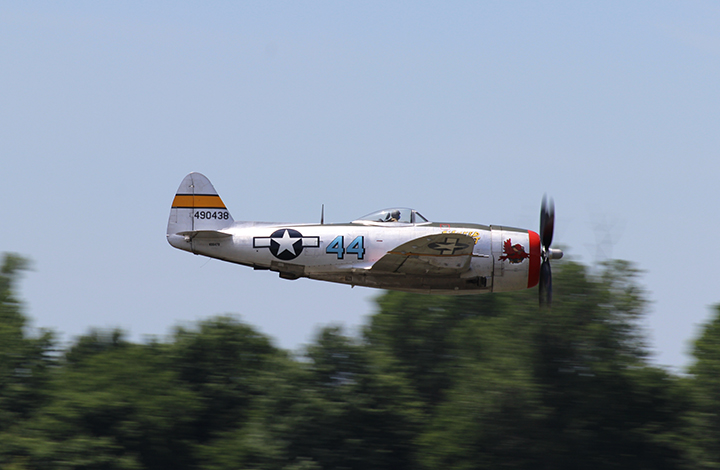
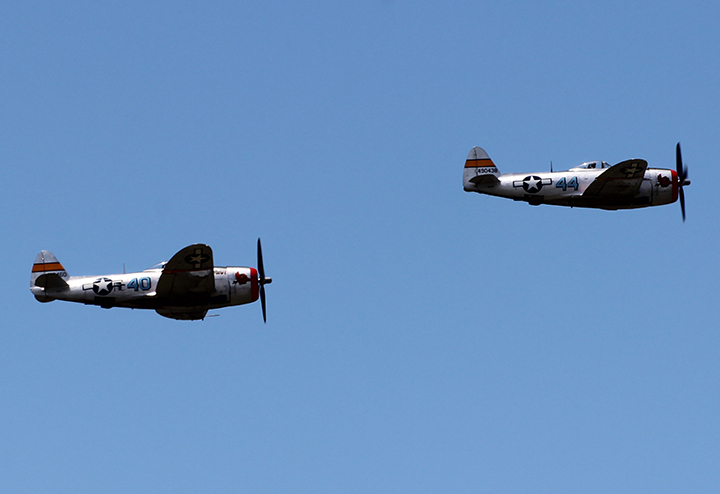
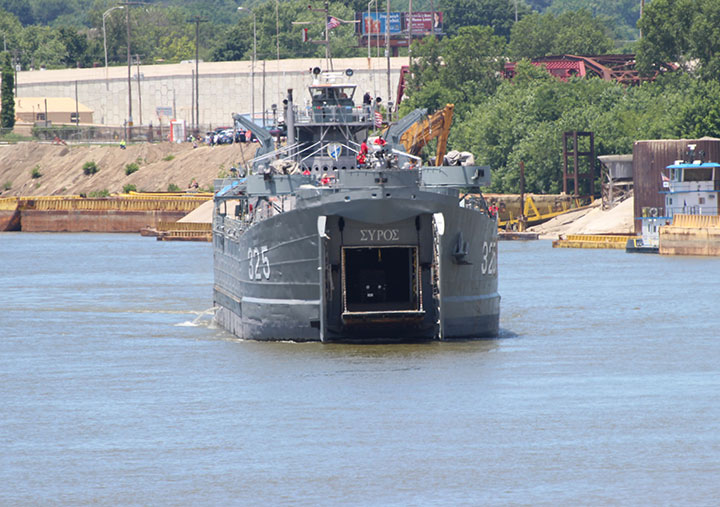
Turning around and heading for home LST-325 gives a look at the open
doors and tank deck. She served with the Greek navy previous to
coming back home to the US, hence the Greek lettering on her.
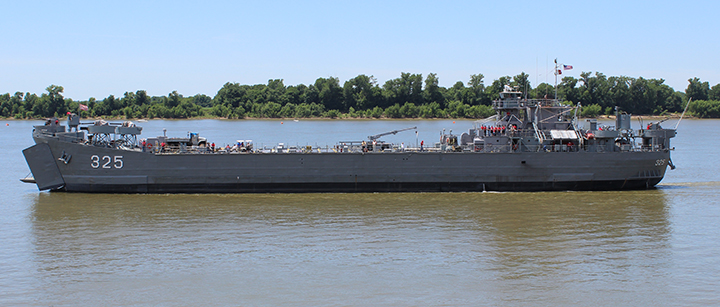
Indiana is unique and privileged to have LST-325 located in the state as
a museum and operable WWII ship. Other states may have the more
glamorous World War Two ships like aircraft carriers, battleships,
destroyers and submarines. But none of them can move under their
own power and are static displays. LST-325 is the only WWII
veteran ship that can move under her own power.
She and her sister ships have a unique place
place in history.
In the quotation below from Dwight D
Eisenhower's book, Crusade in Europe, he is discussing being more
optimistic for successful amphibious landings on Sicily in July of 1943.
"This change resulted from the unforeseen
availability of a considerable number of LSTs and the quantity
production of the "duck," an amphibious vehicle that proved to be one of
the most valuable pieces of equipment produced by the United States
during the war. Incidentally, four other pieces of equipment that
most senior officers came to regarded as among the most vital to our
success in Africa and Europe were the bulldozer, the jeep, the 2-1/2 ton
truck, and the C-47. Curiously enough, none of these is designed
for combat."
In reading Eisenhower's book, logistics and
getting the supplies ashore, whether on Sicily or Normandy were always
at the top of his important considerations.
By the way, LST-325 was one those
"considerable number of LSTs" that Dwight D Eisenhower deemed important
for the success of the invasion of Sicily.
Titusville (Tico), FL
Spirit of St. Louis, MO
Youngstown Air Reserve
Station, OH
Central
Indiana Warbird Event Trilogy
Evansville Normandy Re-Enactment, IN
Dayton Airshow, OH
Warsaw, IN
Richmond, IN
WWI Dawn Patrol Rendezvous, Dayton, OH
|










































